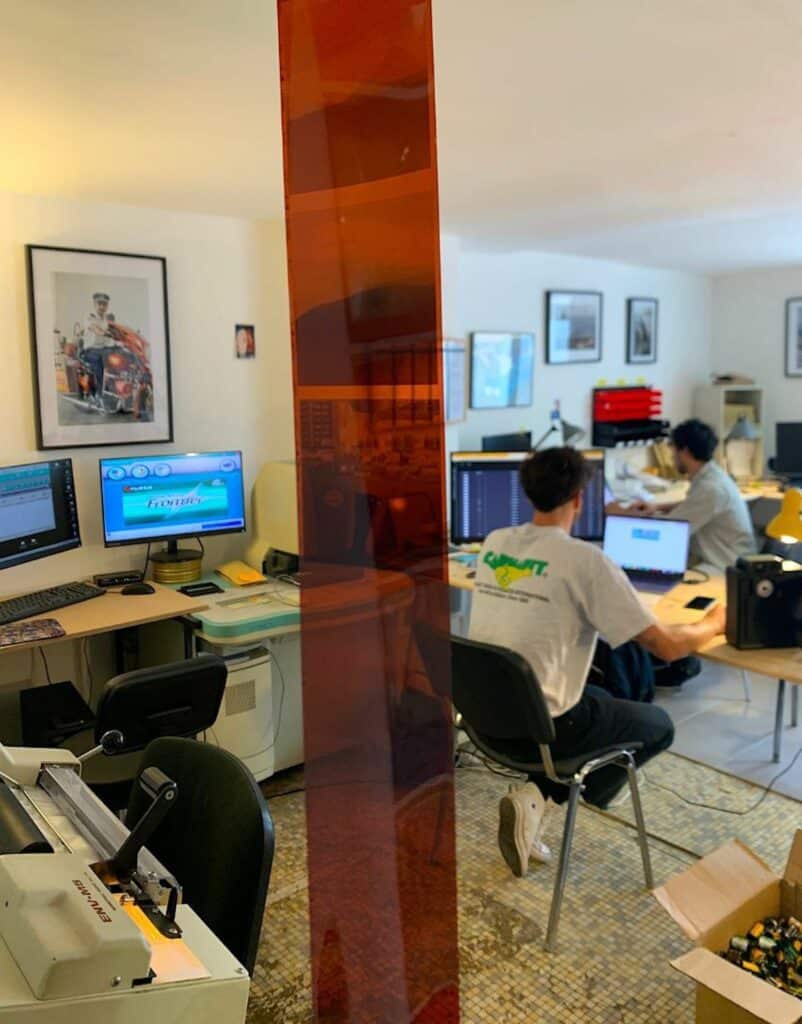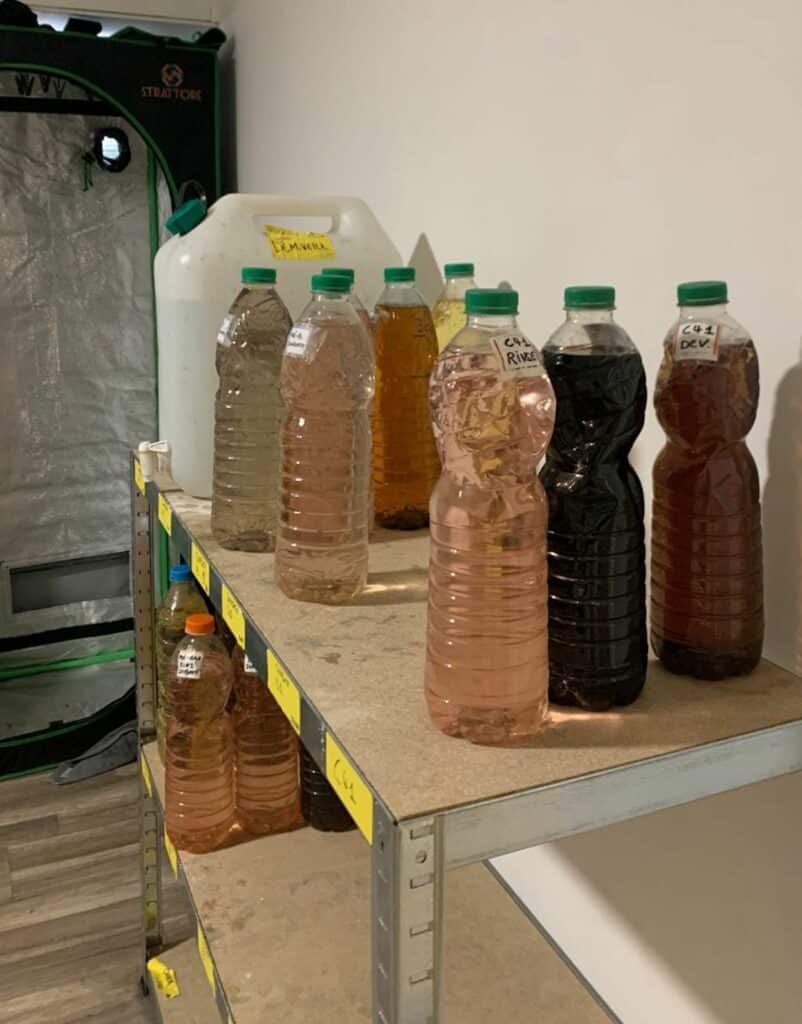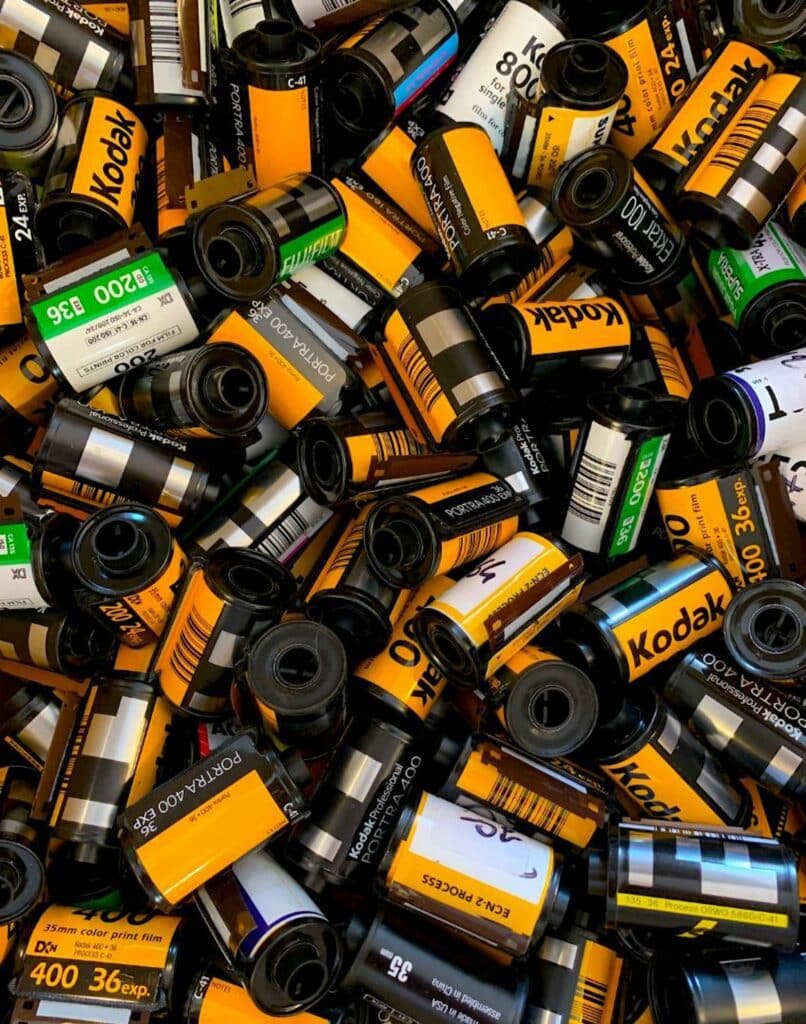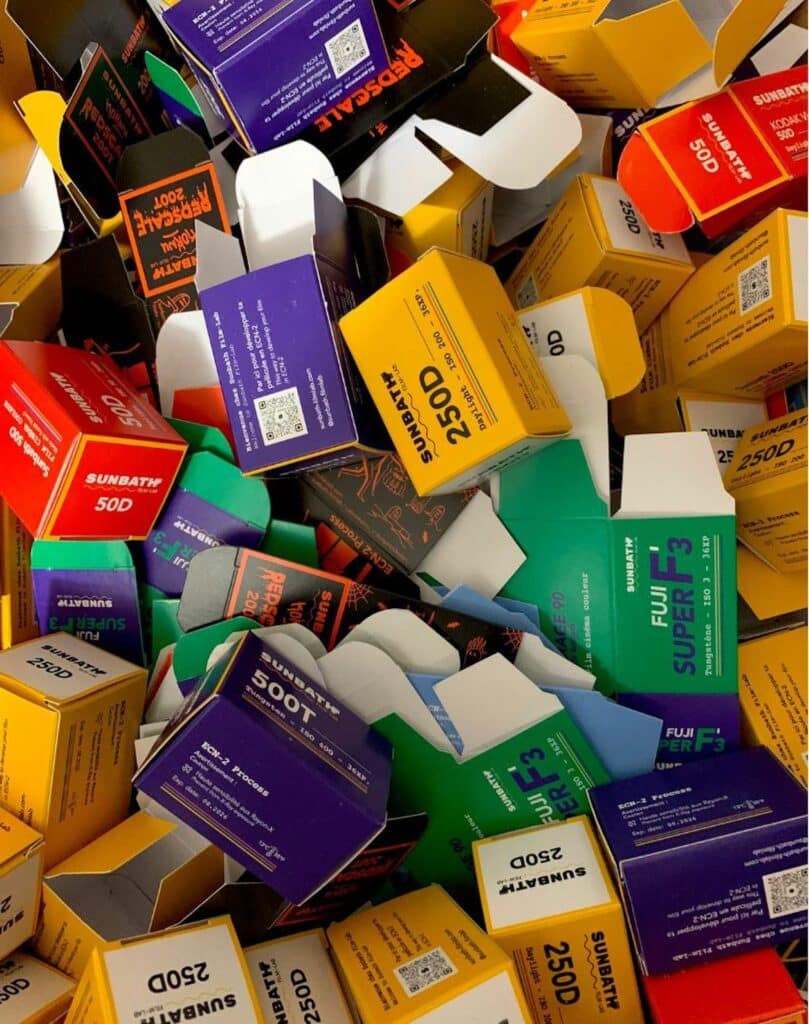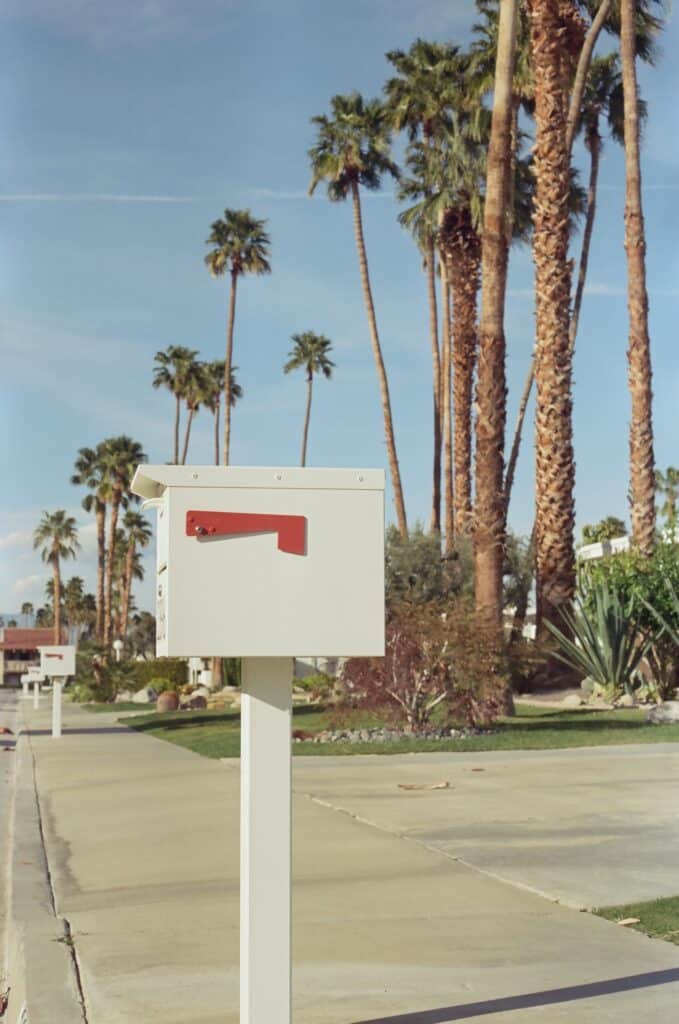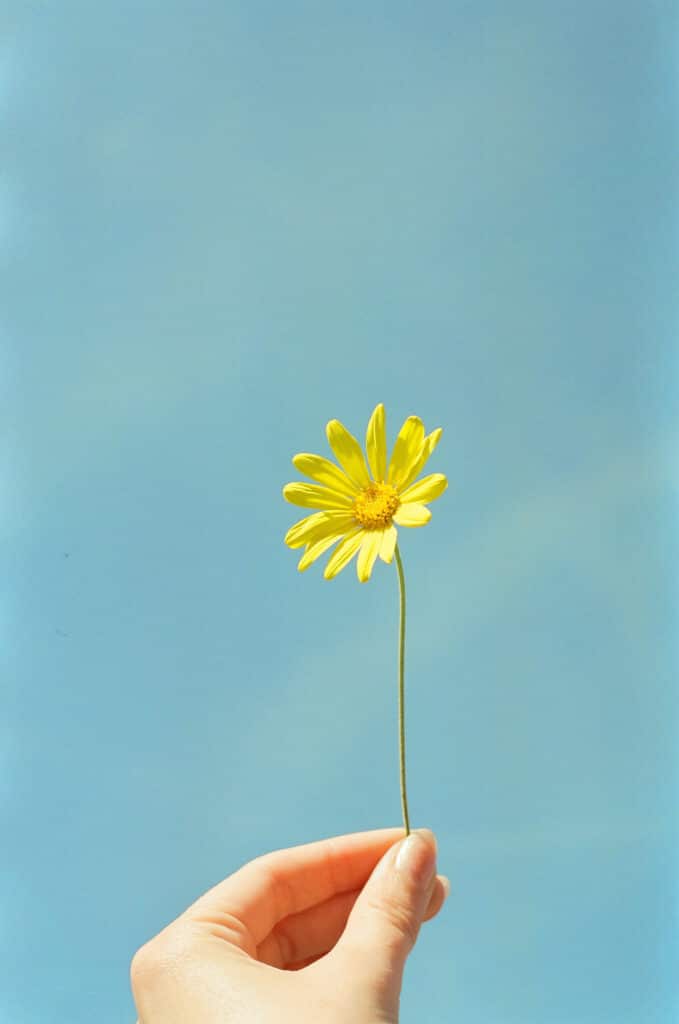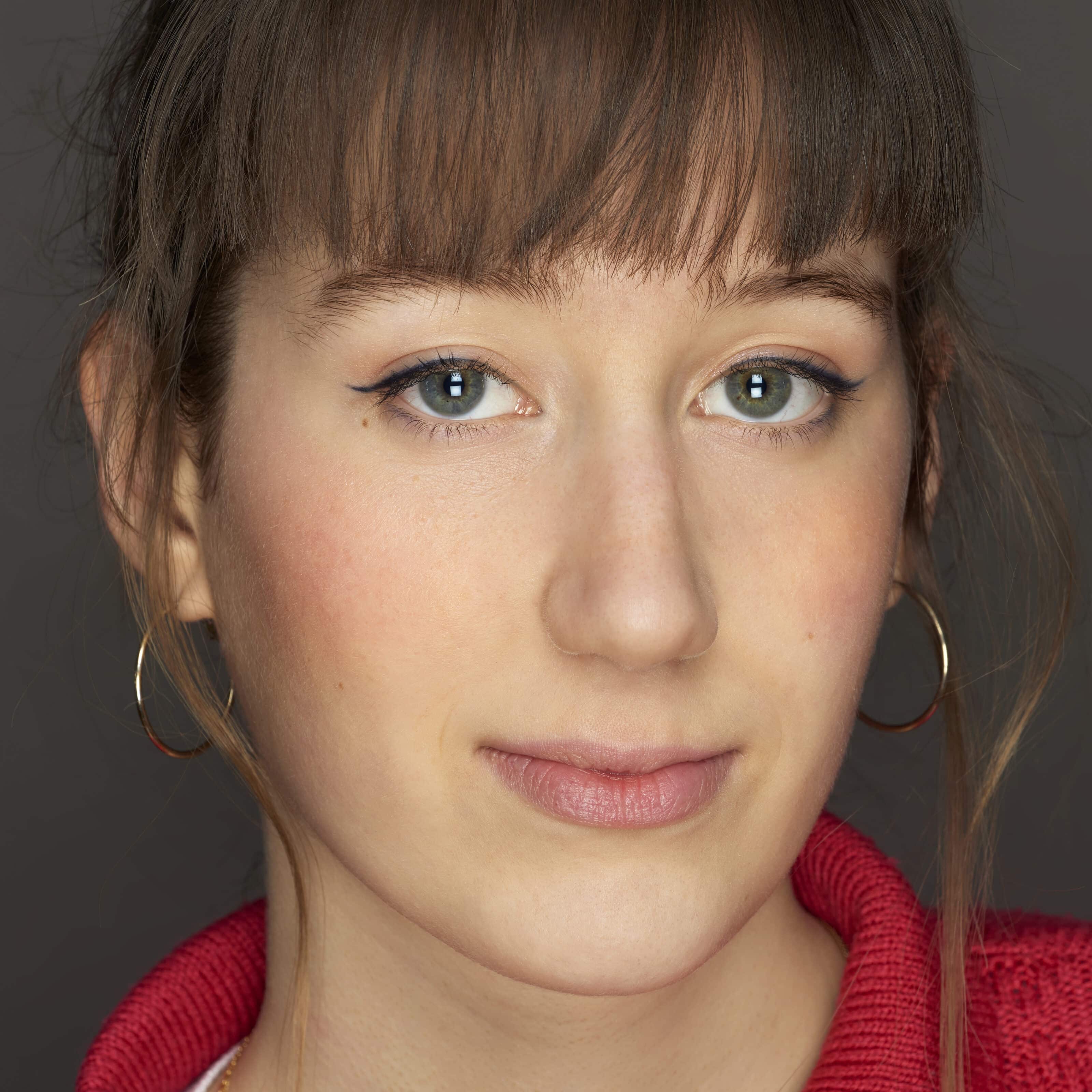Off the beaten path at the Rencontres d’Arles, Maxime, Léo, and Valentin sell their color film rolls at a small makeshift stand. These film rolls, encased in pastel-colored cardboard boxes, are unique: they were handmade using repurposed cinematic film.
The project began with Valentin and Maxime Tanchaud, two brothers passionate about analog photography. To economize, the duo decided to buy 300-meter reels of cinematic film fresh off the factory line. Donning lab coats and gloves, they set out to breathe a new life into this film. Some extensive research and experimentation later, the project expanded, giving rise to Sunbath Filmlab.
Chemistry 101
Sunbath’s laboratory is located in Pantin, near Paris. Inside, there’s no darkroom; instead, a Noritsu developer takes center stage. User-friendly and efficient, this machine can quickly process a large number of 35mm films. However, cinematic films are a different story; they come with a layer of remjet, an anti-halation and antistatic coating. These films require a special manual process: ECN2 and C41 development.
Drawing inspiration from cinematic film development techniques and adapting them for photography, Sunbath has made ECN2 development their signature method. “You have to be ready to slip your gloves back on and really get hands on with the chemistry,” says Maxime. “There are other labs that work with cinematic film, like CinéStill. The big difference is that they remove the anti-halo layer, which is essential for the film’s color balance, so that their film can be developed using the C41 process by any photo lab.”
At the back of the workshop, films, tanks, dryers, chemicals, and dilutions sit side by side. Everything goes through a Jobo processor, a kind of temperature-controlled vat equipped with a motor for alternating rotation of a developing tank. Valentin meticulously explains each step as if it were a culinary recipe: “You have to be precise, calculate the temperatures for the water bath, mix and renew the chemicals to maintain their effectiveness, and adjust the dilutions according to volume.”
It takes skill, but above all, patience, Valentin acknowledges: “ECN2 development is done in five baths. The entire cycle, from spooling to development, takes about an hour and a half, plus another two to three hours for drying.” In contrast, Valentin shows a machine and explains how much simpler C41 development is: “You load your films, and in nine minutes they’re dry and ready to scan. It’s old equipment, but it’s a joy to use. It saves an incredible amount of time.”
100% handmade
Self-taught and self-sufficient, the creators of Sunbath do everything themselves. This includes not only developing the film but also the work of cutting and packaging. They prepare their own 35mm film rolls, winding them onto spools in recycled cartridges stamped with the Sunbath logo. They even built their own website using Squarespace, launching it before even formally establishing a business. “In the beginning, we started developing in our own sink. The first month we made 1000 euros in revenue!”
“We learned accounting, logistics, marketing…” Maxime recalls. “We didn’t outsource anything. We couldn’t afford it anyway. We figured, why not take an extra month or two and create something truly reflects who we are?” To do so, the two brothers learned as they went along, via discussion groups or with the help of more experienced friends. “We mostly learned thanks to people who were interested in our project. Even today, people come along and offer us tips and advice.”
In addition to cinematic film still produced today, Sunbath is continually seeking innovation. And they don’t shy away from seasonal offerings. For Halloween, they released redscale film that produces orange-reddish results. Last summer, they launched limited-edition disposable cameras. “We’re pretty insatiable; as soon as one project is done, we’re on to the next thing.”
Sunbath is much more than your plain old photo lab: it aims to create a community, showcasing the photos of its members on its online gallery and on Instagram. The owners are even considering hosting physical exhibitions to promote their cinematic film rolls and the photographers who use them. “We’ll be back at Arles next year, but this time with an exhibition.”

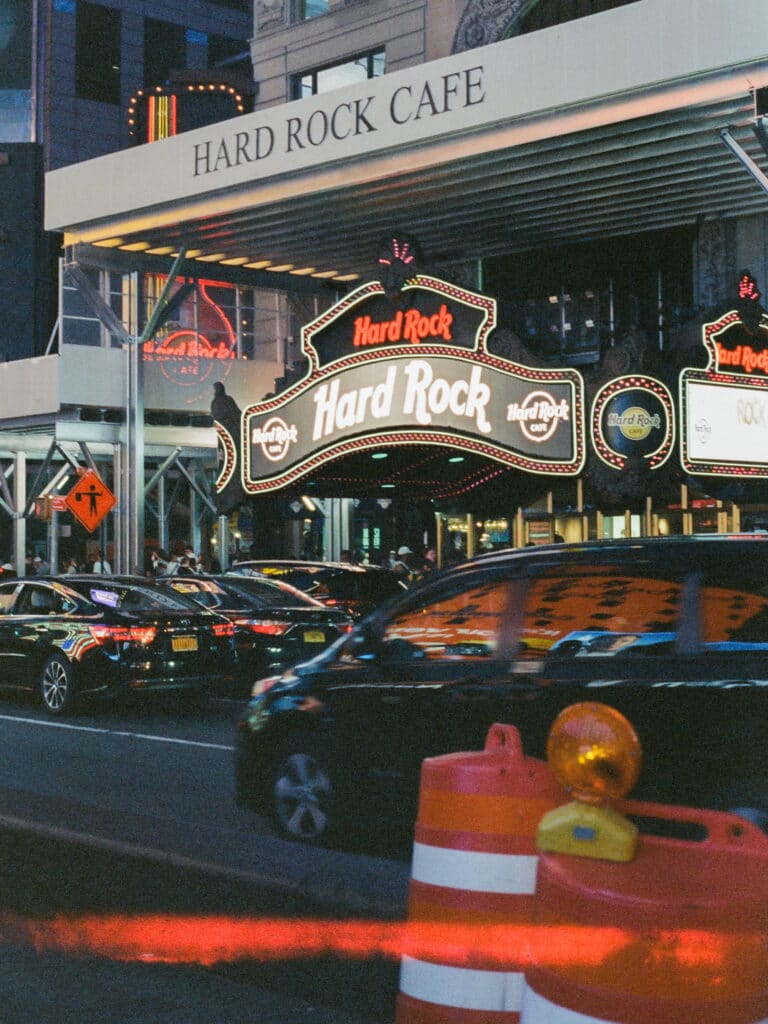
Learn more about Sunbath Filmlab on their website or at 22, rue Beaurepaire, Pantin.

